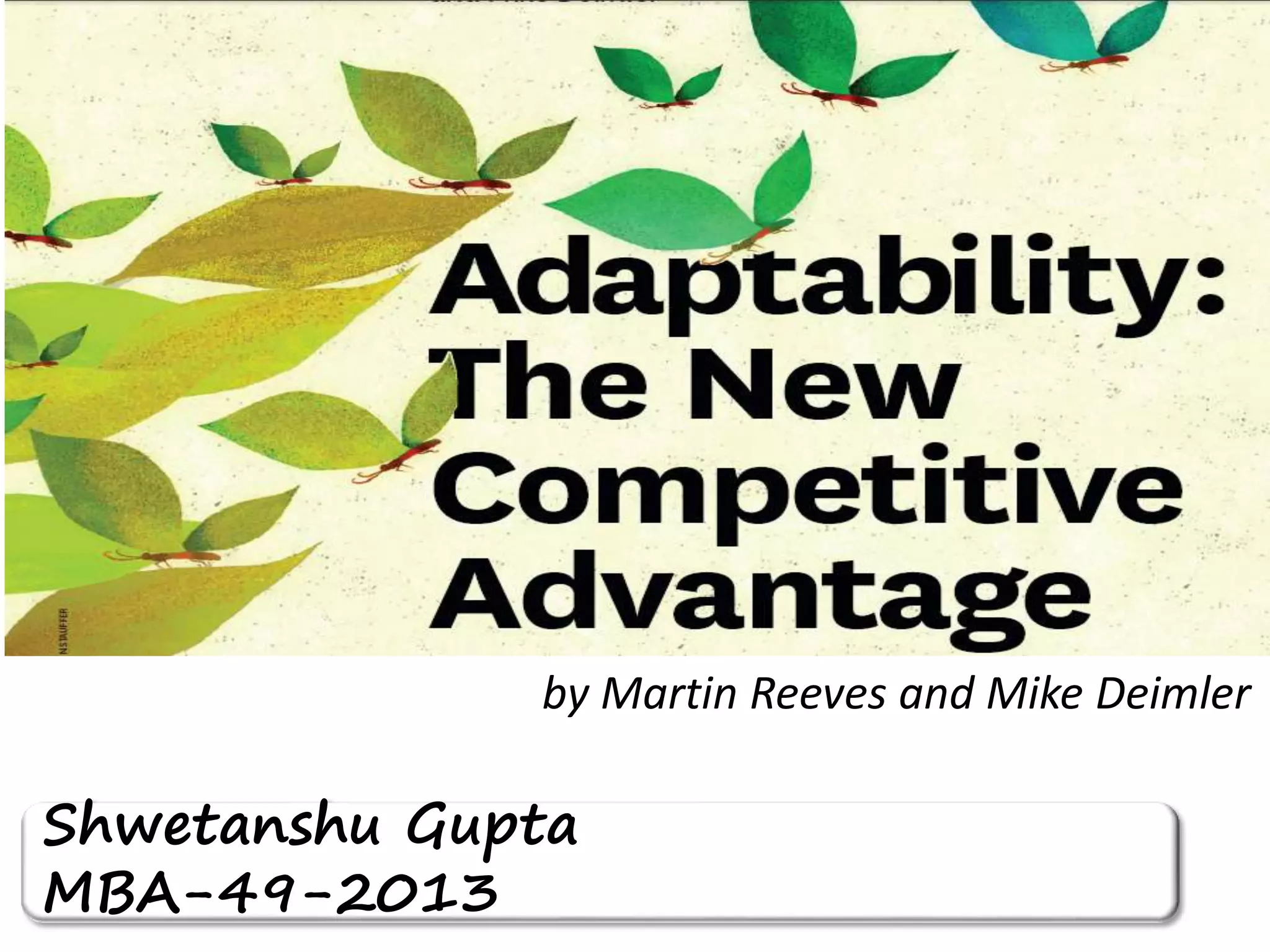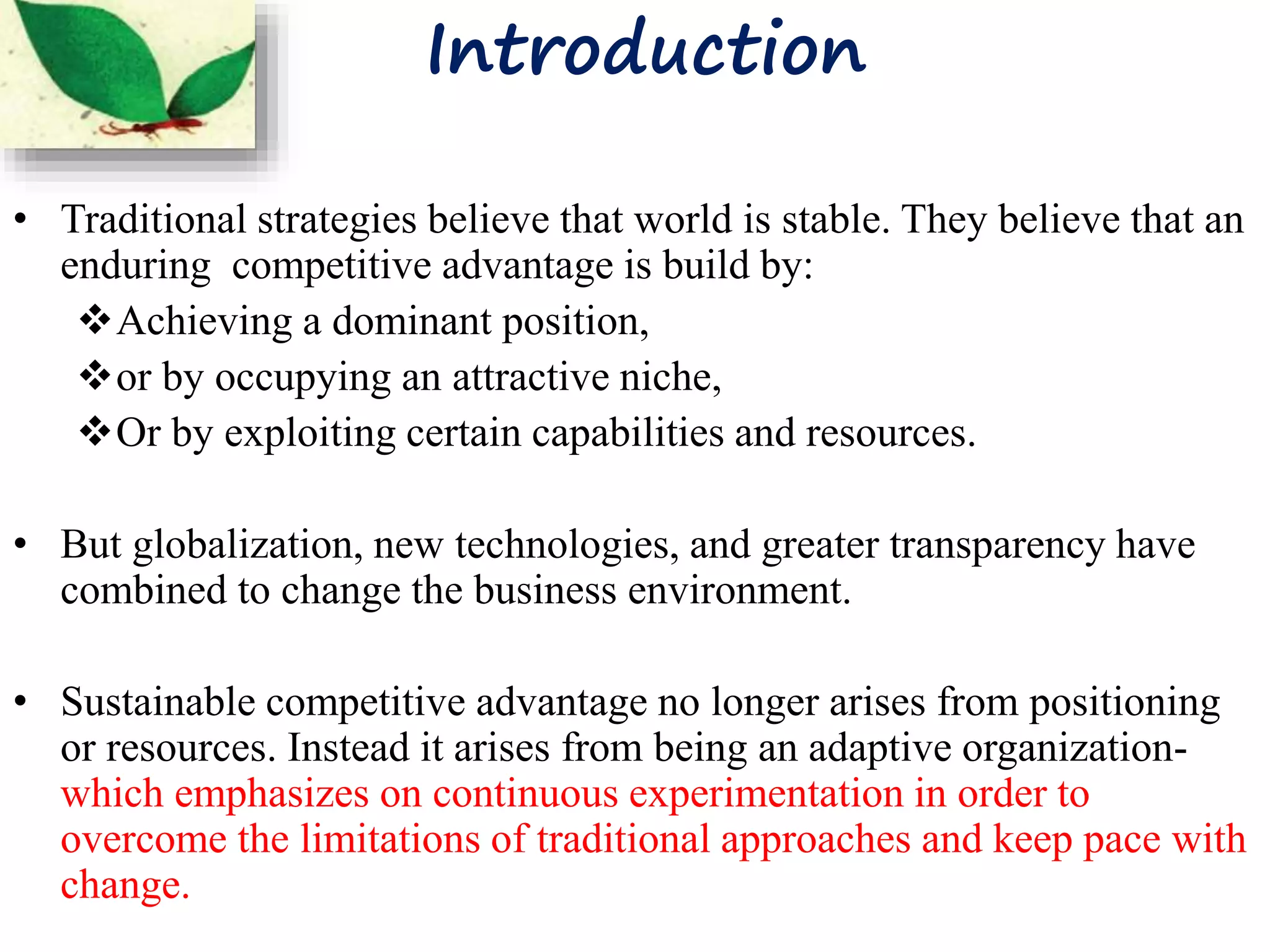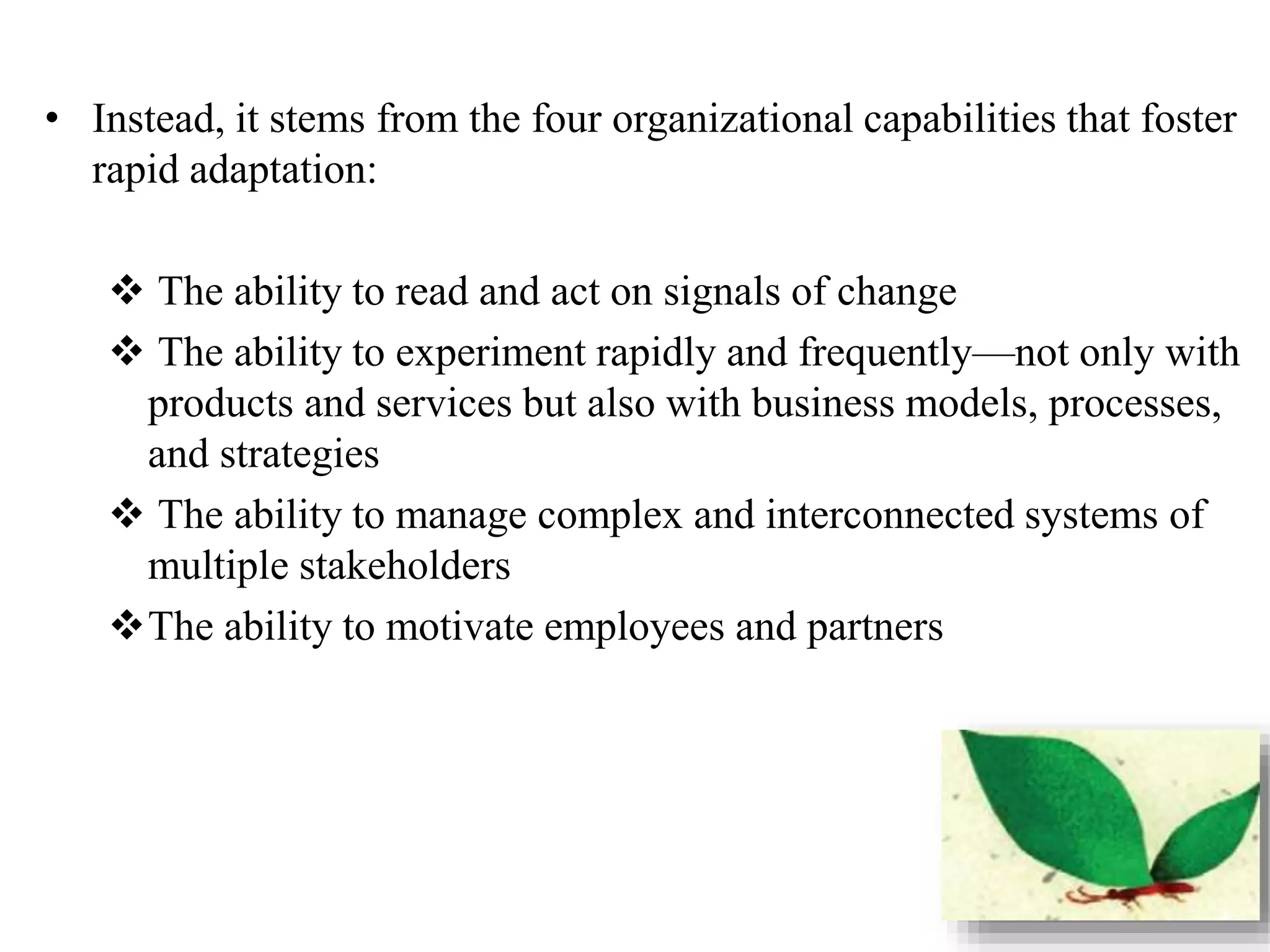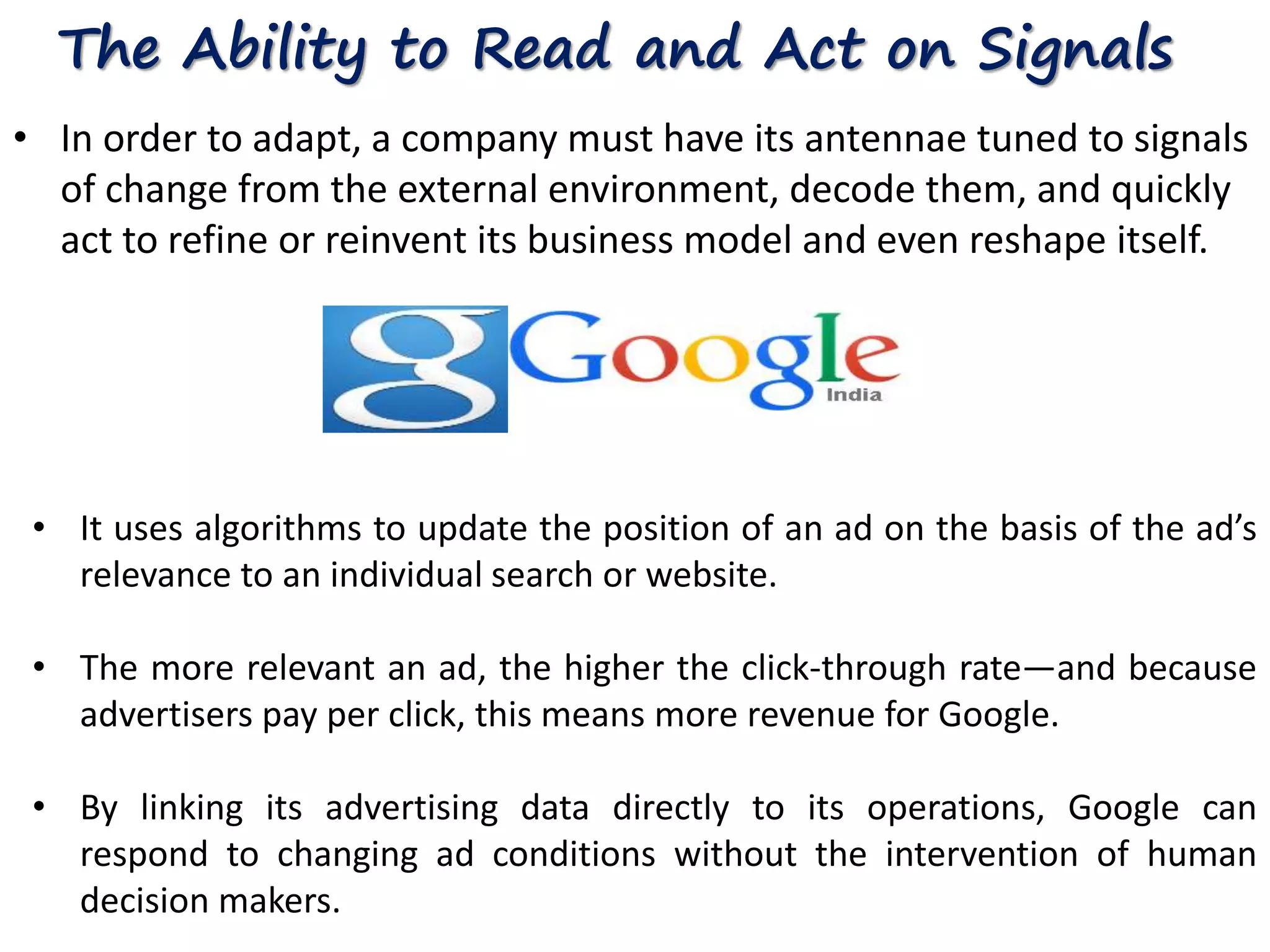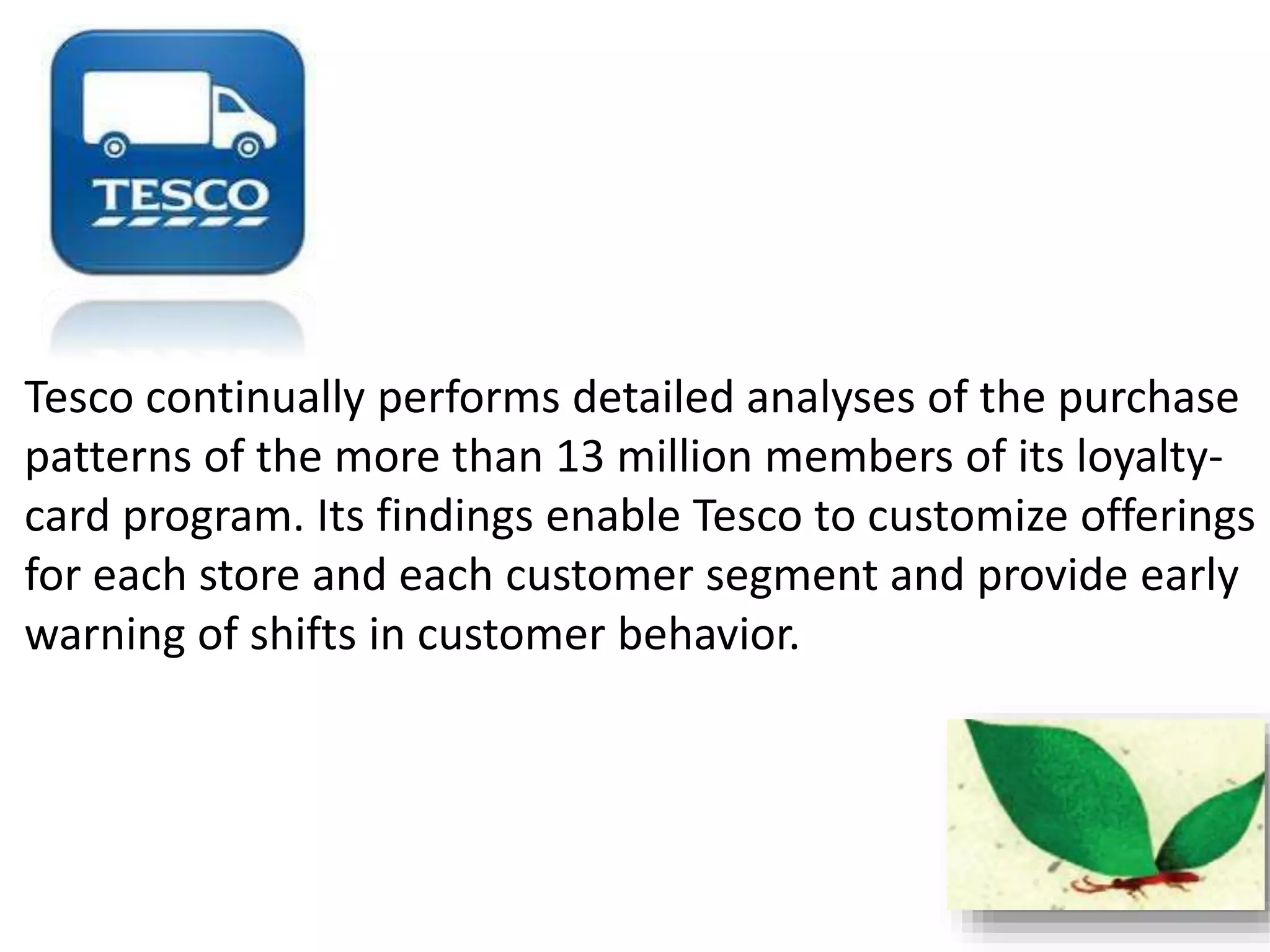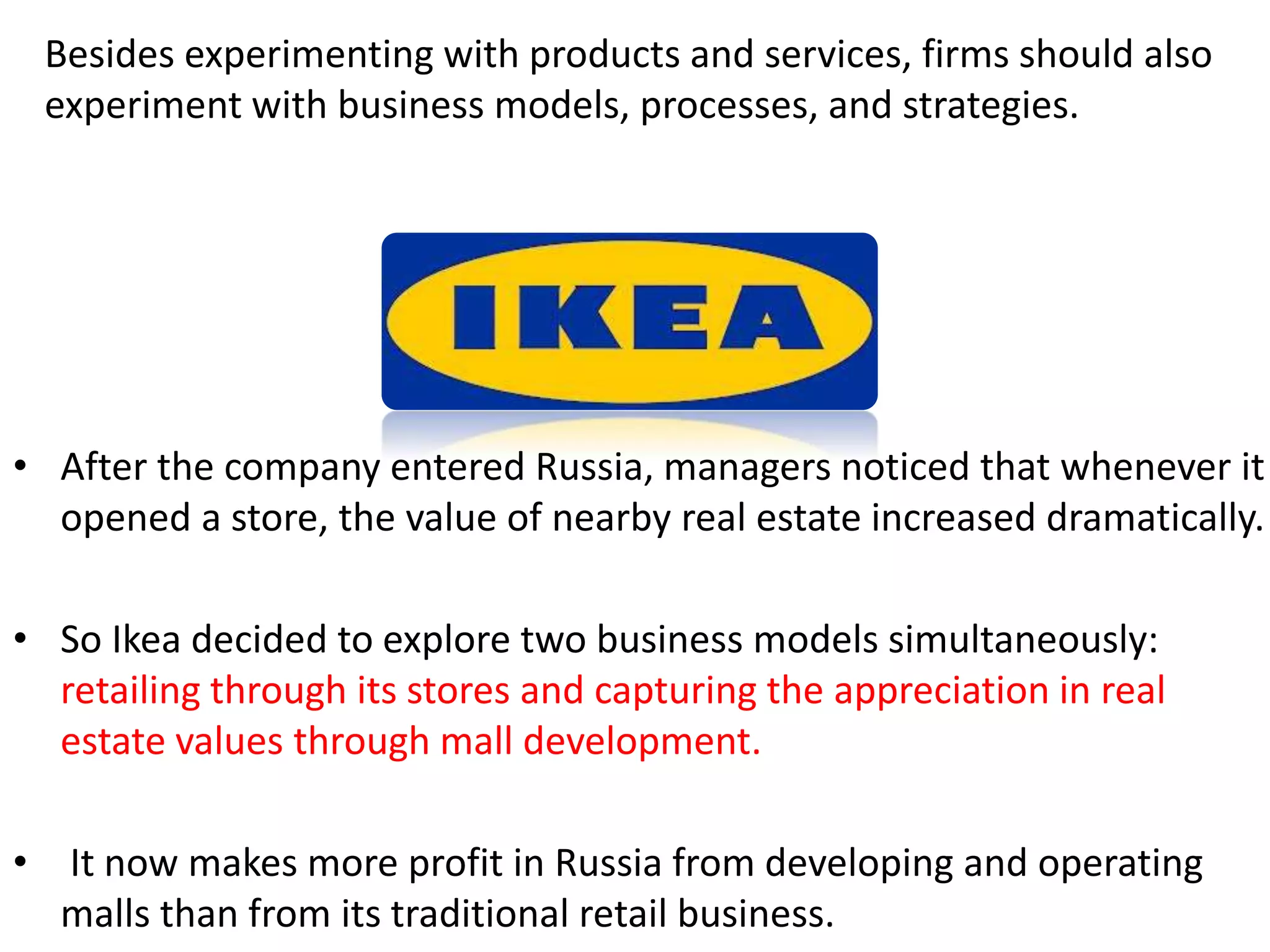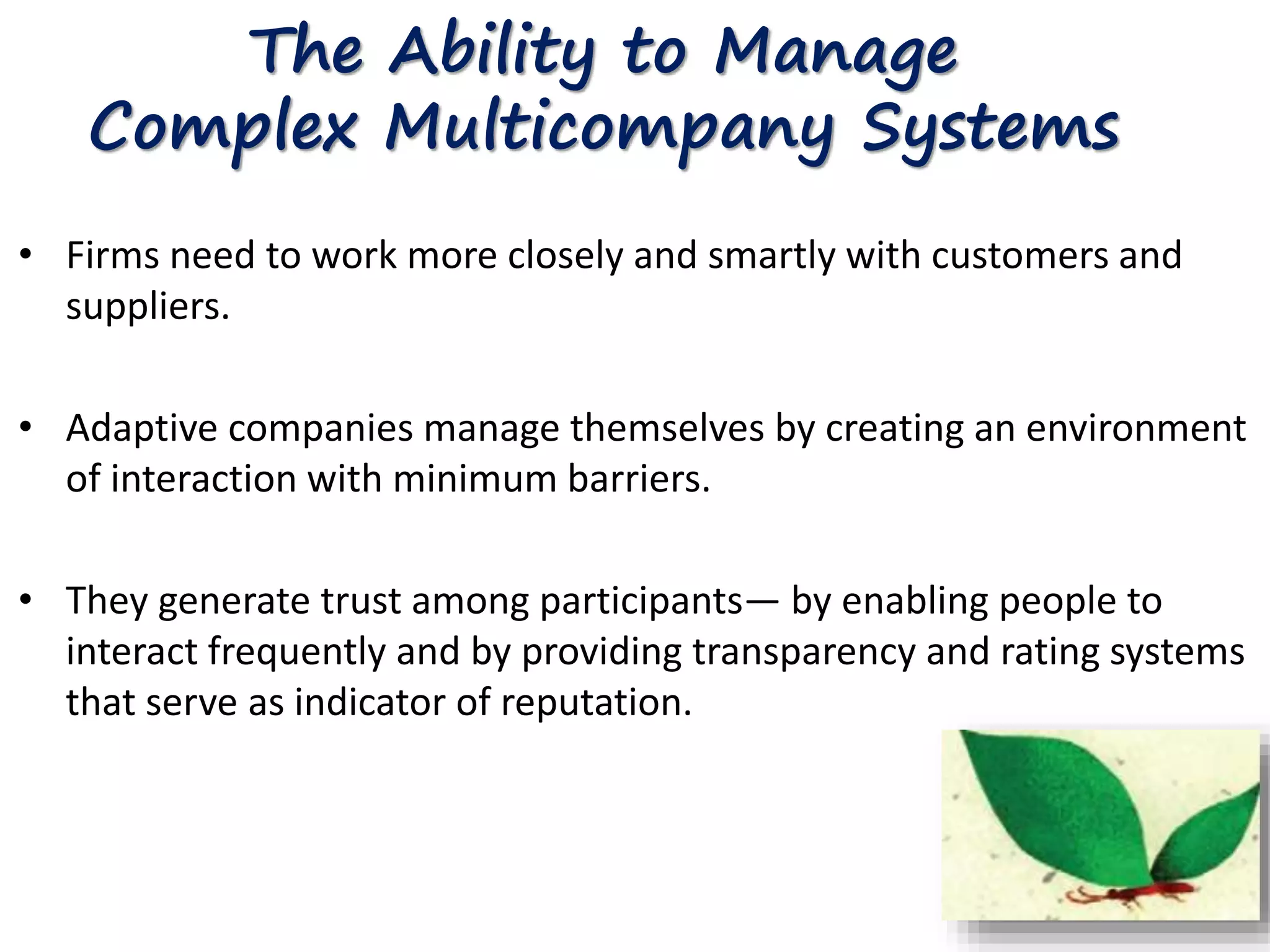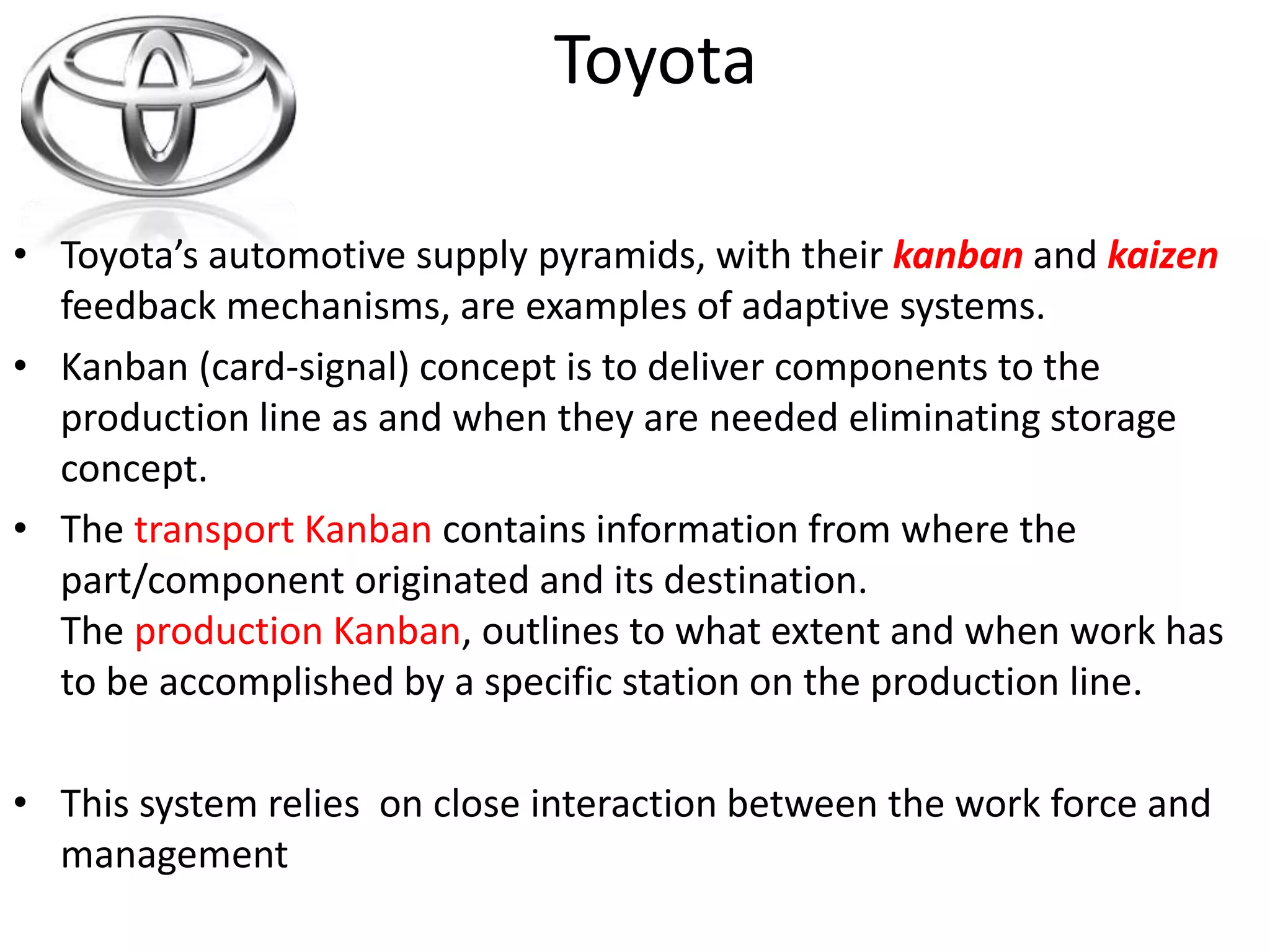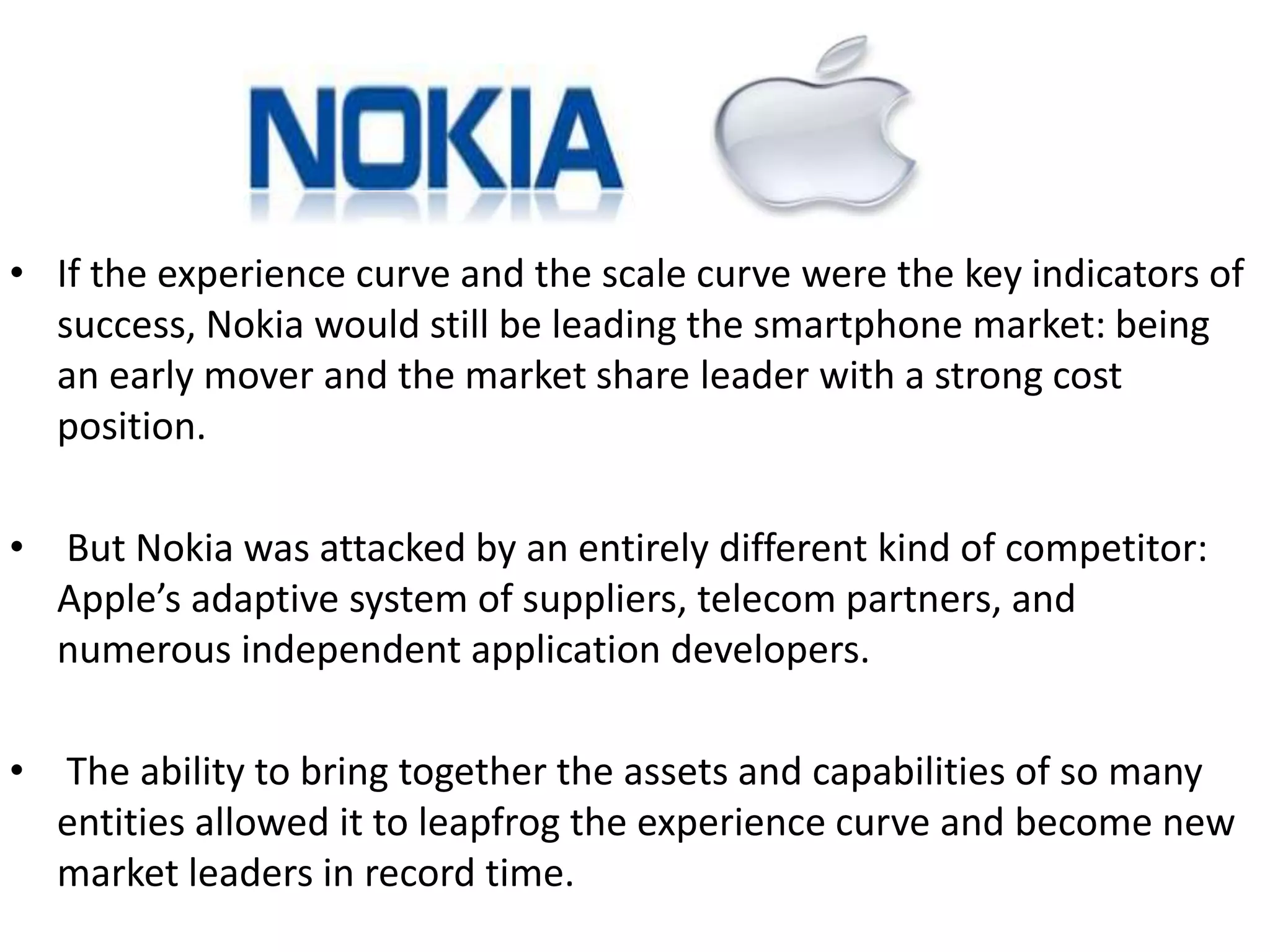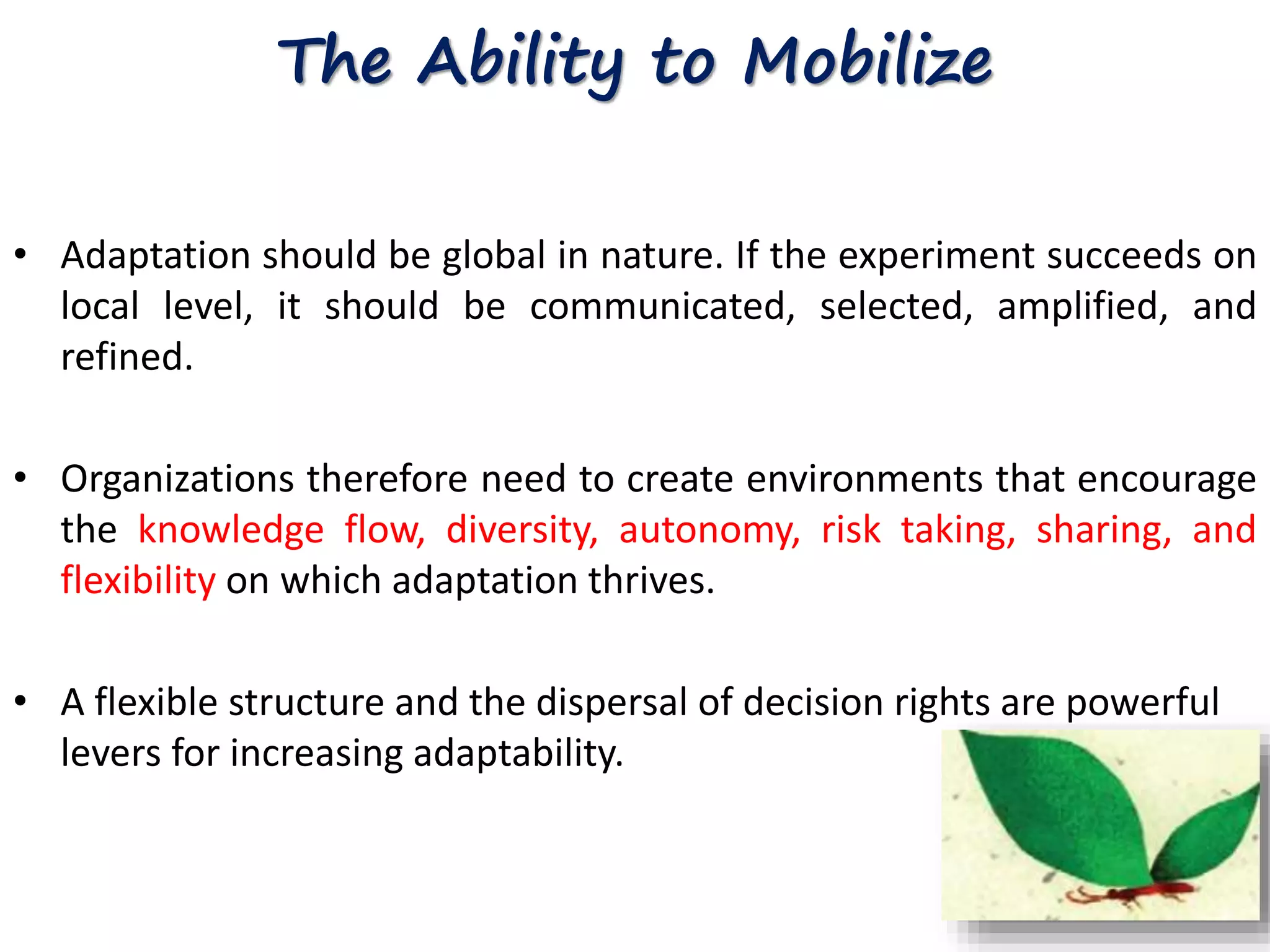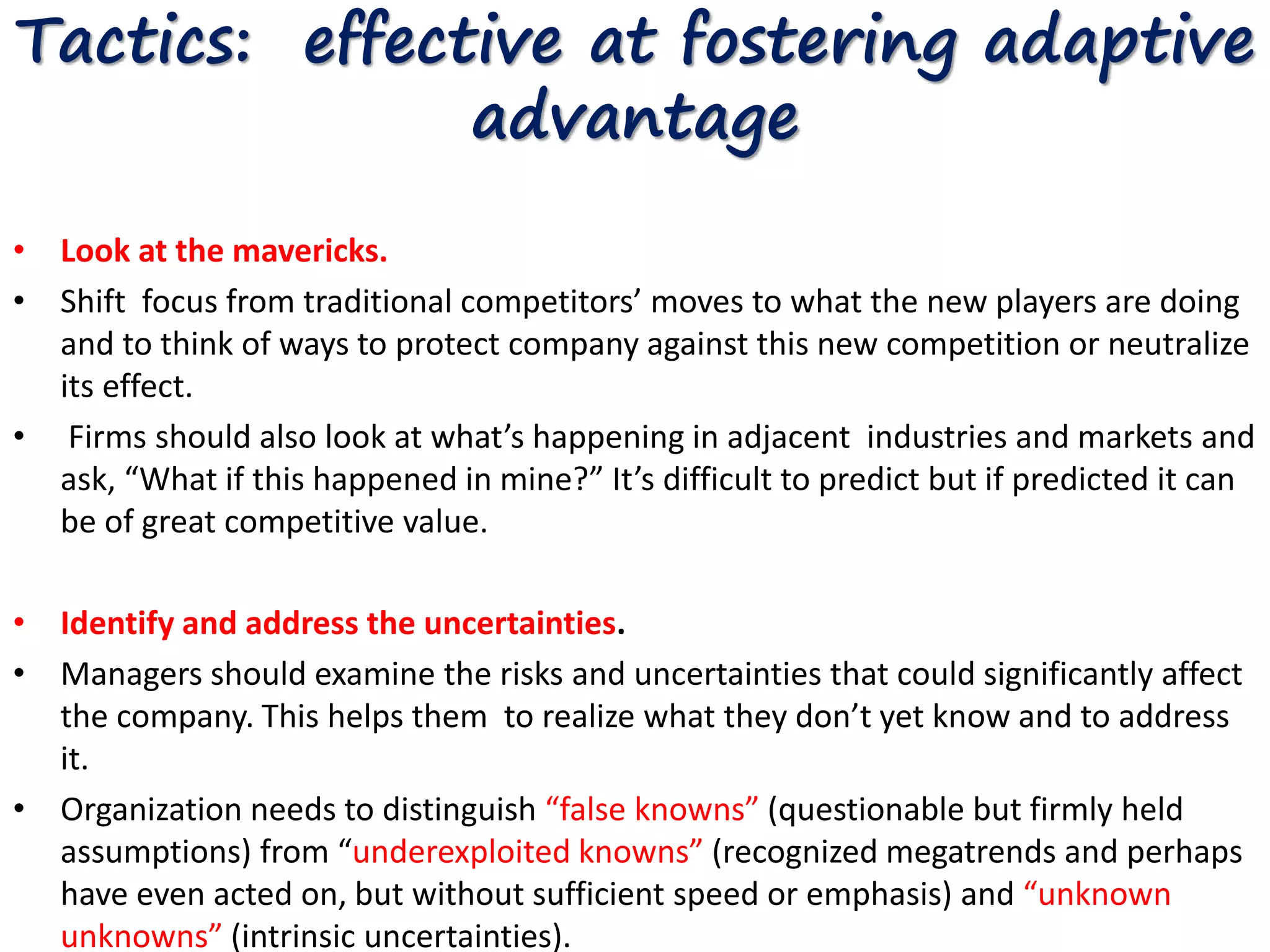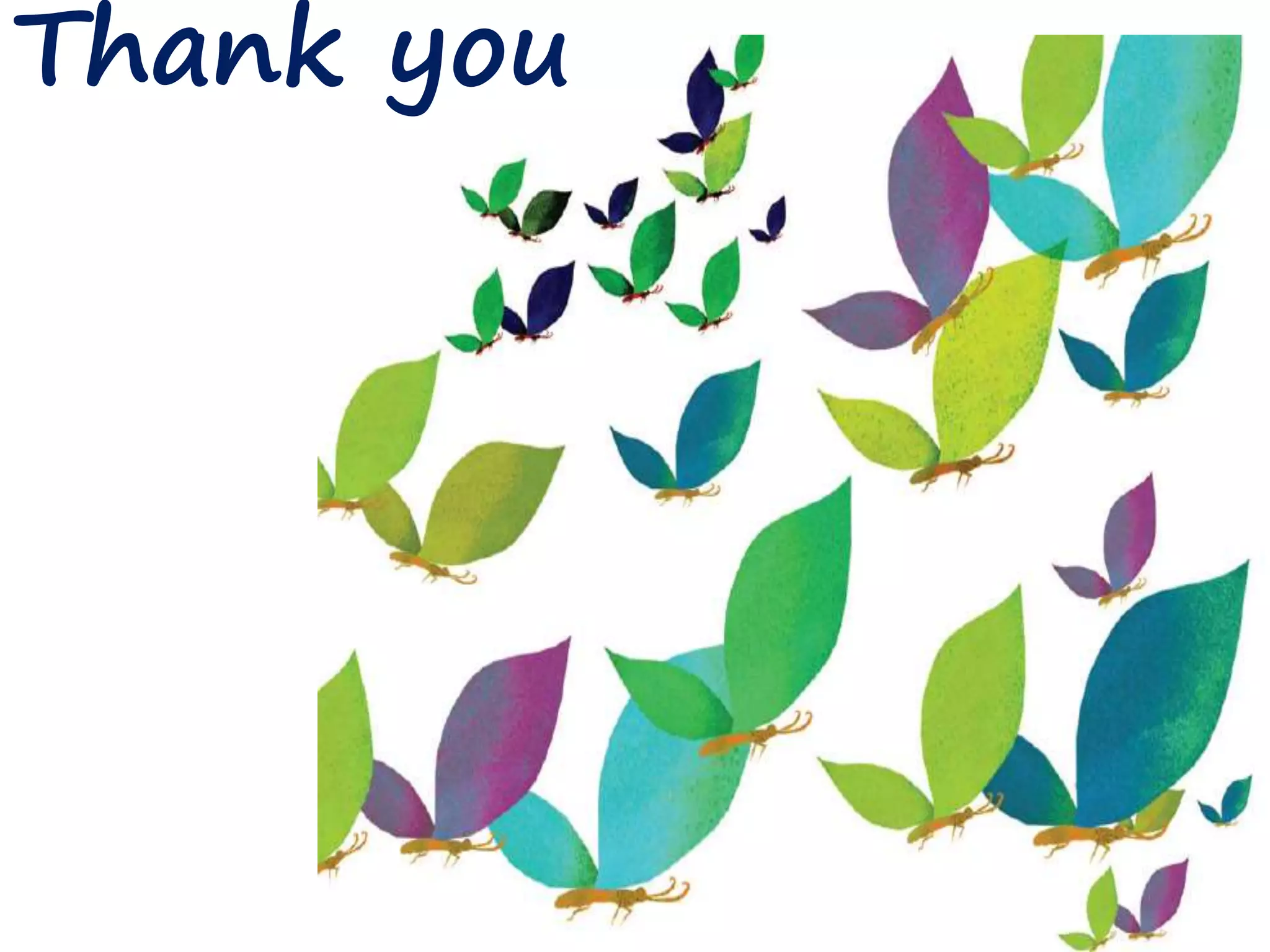This document discusses the importance of organizational adaptability for companies in today's changing business environment. It argues that sustainable competitive advantage no longer comes from positioning or resources, but from being an adaptive organization with four key capabilities: 1) reading and acting on signals of change, 2) rapidly experimenting with products, business models, and strategies, 3) managing complex systems of multiple stakeholders, and 4) motivating employees and partners. It provides examples of companies like Google, Tesco, P&G, Toyota, and Whole Foods that demonstrate these adaptive capabilities. The document concludes with tactics for fostering adaptive advantage, such as examining uncertainties and alternatives, increasing decision-making speed, and putting initiatives on every risk.
